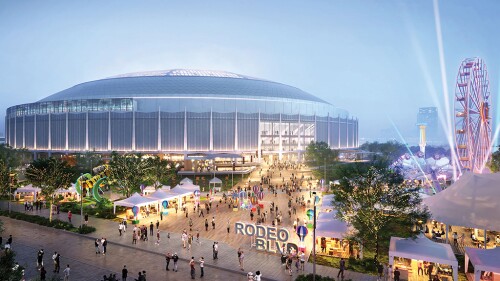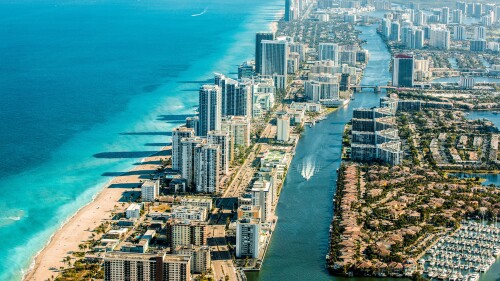When Shanghai Tower opens as China’s tallest building next year, the 2,073-foot (632 m) tower will feature elevators capable of traveling 40.3 miles (64.8 km) per hour, or 59 feet (18 m) per second, a new milestone. That bests the 55.1 feet (16.8 m) per second achieved by the elevators in the current record holder, Taipei 101 in Taiwan, which was completed in 2004.
But Shanghai Tower likely will not hold the title as world’s fastest for long. Builders of the Guangzhou CTF Finance Centre, which is scheduled to open in 2016 in Guangzhou, China, have promised elevators capable of traveling 66 feet (20 m) per second, or 45 miles (72 km) per hour. The elevators will take passengers from the first floor to the 95th floor in about 43 seconds.
Register for the ULI Mainland China Annual Meeting | More About ULI Asia
The question facing the industry today: how fast can elevators go without sacrificing comfort?
“This is a new day,” says Steve Edgett, partner in Edgett Williams Consulting Groups, which works on elevator designs. “We’re in uncharted territory.”
Some analysts believe mankind may be close to the limits of elevator speeds using modern technology.
“I think there is a limit, not to building, but what we can do efficiently,” says Johannes de Jong, head of technology for Finland-based Kone Elevators.
The biggest obstacle for faster speeds is the variance in air pressure from the bottom to the top of tall buildings. A superfast elevator leaves no time for the body to adjust to the changes in pressure, similar to the effect experienced by divers surfacing too quickly in the ocean.
For elevators to go faster, something will have to be done to accommodate the human ear, which is extremely sensitive to pressure changes. Commercial jets typically take 20 to 30 minutes to descend from their highest altitude and help passengers adjust, yet earaches and complaints are still common. “One thing we cannot do is change the laws of physics,” de Jong says.
For the Guangzhou tower, Japanese tech firm Hitachi, which is building the elevators, will use a sophisticated control panel that can respond to “changes in atmospheric pressure correctly” to smooth the acceleration and deceleration process and “relieve the feeling of fullness in the ear as a result,” a company spokesperson says. This adjustment technology will reduce the abrupt pressure changes inside the elevator car, while special “active guide rollers” will compensate for even tiny lateral vibrations, Hitachi says.
But there is no guarantee the measures will provide a comfortable ride. Every person’s physiology is different; people with colds or earaches may be more susceptible to ear problems. At 66 feet (20 m) per second, even the slightest vibration will create a shock for passengers.
In Taipei 101 and other existing tall buildings, the elevators are usually set to descend much slower than they ascend in order to ease the ride. Nevertheless, passenger complaints are common. “At nine meters [30 feet] a second, I felt my ears pop,” Edgett says.
In the one-kilometer-tall (0.6 mi) Kingdom Tower under construction in Saudi Arabia—which likely will become the next “tallest building in the world”—Kone expects elevator speeds to peak at 33 to 41 feet (10 to 12.5 m) per second. “It’s up to the client,” de Jong says. “We have to show him how it feels.”
However, Kingdom Tower will feature the longest single elevator ride in a building, about 2,165 feet (660 m), using a new carbon fiber cable designed by Kone called UltraRope, which is dramatically lighter and stronger than steel cables.
Technology exists for elevators to go even faster, experts say. Powerful engines, guidance systems, and new rope technologies are on the horizon. But a dramatic technological breakthrough will be needed to address passenger comfort, and it is unclear who will undertake the expensive research necessary to make that happen.
“There is a point of diminishing returns,” says Jay Popp, executive vice president, international, for Lerch Bates, an international consultancy. “Development costs are enormous for something that you will sell very few of.”
The ability to tout the “fastest elevators in the world” may not be enough incentive for developers to push the envelope. If it takes 20 floors for an elevator to reach top speed and 20 floors for it to slow down, there is little advantage to the top speeds except in the tallest of buildings.
The elevator industry is eagerly anticipating the rollout of the Shanghai Towers elevators, which will test the boundaries of new technologies. Mitsubishi Elevators, which is building the tower’s elevators, says it will use proprietary “pneumatic control to compensate for rapid changes of atmospheric pressure,” along with “sleek roof covers” to reduce vibrations.
“If Shanghai Tower goes well, we’ll get some data,” Edgett says.
That information may inspire more research and more out-of-the-box thinking. Possibilities range from pressurized lobbies to special devices that would fit into passenger’s ears to ease discomfort.
“In that case, you could double 18 meters [49 feet] a second,” Edgett says. “The question is do you want to?”
Rather than focusing on speed, ThyssenKrupp, the German steel and engineering giant, will begin testing a system based on magnetic levitation (maglev) technology in 2016, which would allow elevators to move horizontally. This could increase the effective speed of vertical transit by having multiple elevators travel in a circular route within the same shaft, like a vertical subway train line, instead of today’s standard of one or two cars per shaft.





![07[1].jpg](https://cdn-ul.uli.org/dims4/default/2a18780/2147483647/strip/true/crop/4287x2409+0+475/resize/500x281!/quality/90/?url=https%3A%2F%2Fk2-prod-uli.s3.us-east-1.amazonaws.com%2Fbrightspot%2F5a%2F1c%2Fe19541d341af8104a918d841326e%2F071.jpg)

